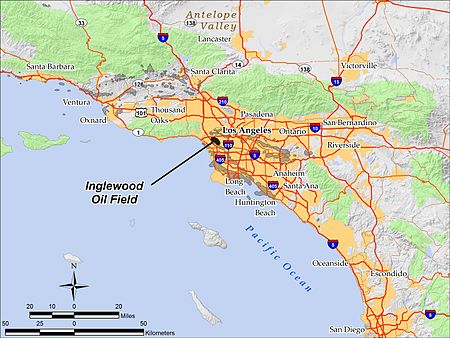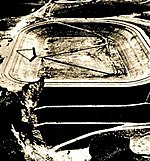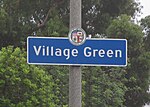Inglewood Oil Field

The Inglewood Oil Field in Los Angeles County, California, is the 18th-largest oil field in the state and the second-most productive in the Los Angeles Basin. Discovered in 1924 and in continuous production ever since, in 2012 it produced approximately 2.8 million barrels of oil from some five hundred wells. Since 1924 it has produced almost 400 million barrels, and the California Department of Oil, Gas and Geothermal Resources (DOGGR) has estimated that there are about 30 million barrels remaining in the field's one thousand acres, recoverable with present technology.The field is operated by Sentinel Peak Resources, which acquired it in their purchase of Freeport McMoRan's onshore California oil and gas assets in 2016. Freeport McMoRan acquired it from Plains Exploration & Production in 2013. Surrounded by Los Angeles and its suburbs, and having over one million people living within five miles of its boundary, it is the largest urban oil field in the United States. Freeport had pursued a vigorous program of field development through water-flooding and well stimulation to increase production, which has been slowly declining since the field's peak in 1925. In recent years, field expansion and revitalization have been controversial with adjacent communities, which include Culver City, Baldwin Hills, and Ladera Heights. Several organizations have formed to oppose field development, in particular the proposed use of hydraulic fracturing as a well stimulation technique. In response, to assuage the fears of the surrounding community, Freeport McMoran's consultants have published reports attempting to show that such practices are safe. Additionally, in 2008 the Los Angeles County Board of Supervisors adopted a Community Standards District (CSD) for Baldwin Hills, specifically to regulate development and operations in the oil field to make it compliant with community environmental standards. On September 15, 2021 the Los Angeles County Board of Supervisors voted 5-0 to close the Inglewood Oil Field.
Excerpt from the Wikipedia article Inglewood Oil Field (License: CC BY-SA 3.0, Authors, Images).Inglewood Oil Field
Park to Playa Trail, Los Angeles
Geographical coordinates (GPS) Address Nearby Places Show on map
Geographical coordinates (GPS)
| Latitude | Longitude |
|---|---|
| N 34.0047 ° | E -118.369 ° |
Address
Park to Playa Trail
90230 Los Angeles
California, United States
Open on Google Maps











